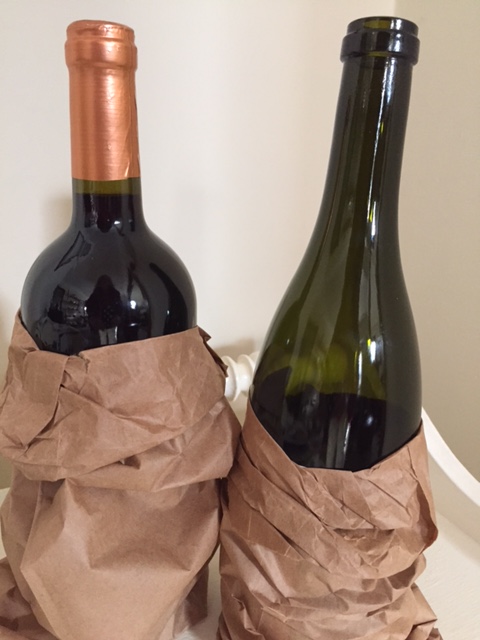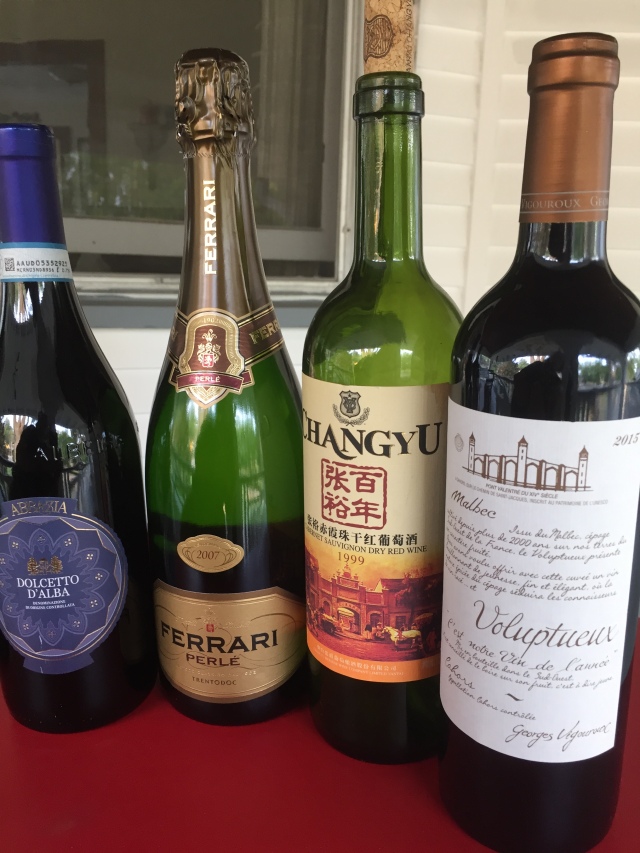Everyone I know drank to someone’s health (or prosperity, or a new job, or world peace) in the last two weeks – but did we do it correctly?

[Photo, “Toast to 2012,” courtesy of Hakee Chang via Flickr]
We’ve been practicing long enough that we should be able to get it right by now. People toasted each other as early as the 1st century BCE, when Roman citizens were required to drink to the health of Emperor Augustus at every meal. In A Gentleman’s Guide to Toasting, author David Fulmer writes that people continued toasting into the Middle Ages, but they weren’t exactly singing each others’ praises: back then, poison was a common means of getting rid of enemies, so people poured a bit of wine into their rivals’ glasses to prove the wine hadn’t been poisoned. Drinkers who trusted each other skipped the tasting part and just clinked glasses; some historians claim the clinking noise chased away evil spirits.
The word “toast” may have evolved from Elizabethan times, when ale houses placed a piece of spiced toast in glasses to flavor drinks. The toast also supposedly soaked up the dregs. By the early 1700s, a toast came to mean “a sentiment expressed just before drinking to someone.”
We all get pressed into toasting duty eventually. When your turn comes, drinking etiquette experts (yes, some people actually specialize in booze manners) offer these pointers:
- Before you speak, get the group’s attention – don’t begin your toast while people are talking – and make sure everyone has a glass. Include teetotalers; they can toast with water or soda.
- Raise your glass to eye level, make eye contact and begin your toast. Keep it to two or three sentences. Don’t wax on.
- Your toast should be appropriate to the occasion. Don’t mention dead people at a festive celebration or be too casual at a formal or serious event.
- Don’t begin your toast with a story about yourself. Sorry, but nobody cares.
- Don’t use a script – surely you can remember three sentences.
- Make it original. Resist the temptation to include clichés; they’re cop-outs.
- And even if you’re the biggest potty-mouth in the room, don’t curse during a toast. Never, never, never.
Wine Lingo: Punt = the indentation at the bottom of a bottle of sparkling wine. The punt has a practical purpose: during production, six “atmospheres” of pressure, or up to 90 pounds per square inch, build up inside the bottle. That’s more than twice the air pressure in a car tire, and the reason why you enjoy up to 100 million bubbles in each bottle. The punt helps to distribute that pressure. Other wine bottles sometimes feature punts as well.

Vino ‘View: I toasted a lot this season, and the best glass I raised was 2009 Yarden Blanc de Blancs (12 percent alcohol, $30.99). This Israeli sparkler from Galilee is produced by the traditional method and aged at least four years. The bubbles were fine and aggressive, just the way I like them. Yarden is known for its sparkling wines and this one delivers medium body with a surprising mix of crisp citrus and tropical tastes on top of homemade bread. Orange and honeydew melon were the prominent and lingering flavors, with a touch of grapefruit. This vintage will keep another two years; Yarden bubbly generally can age for a decade.
[The Yarden Blanc de Blancs was sent to BigSexyReds for review.]
Cheers!
Mary


 Here’s all you really need to remember: anyone who’s literate can understand enough to know what they’re buying. You just need to identify whether
Here’s all you really need to remember: anyone who’s literate can understand enough to know what they’re buying. You just need to identify whether 


 Vino ‘View: A delicious example of an NV wine is Astoria’s
Vino ‘View: A delicious example of an NV wine is Astoria’s 


